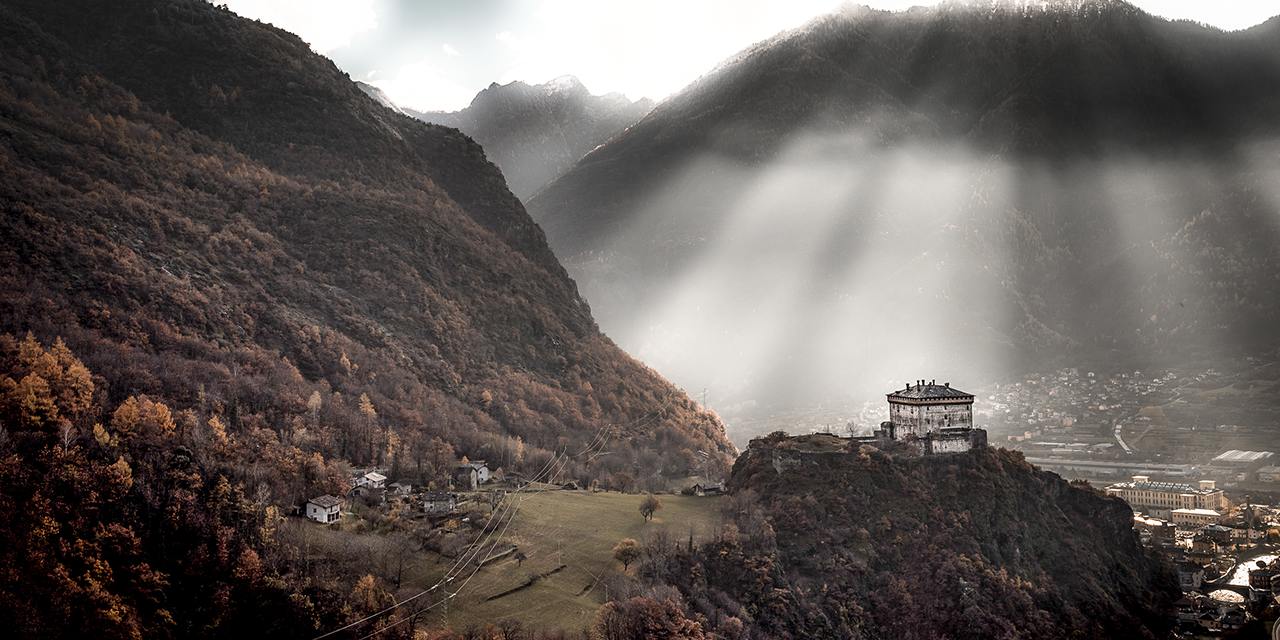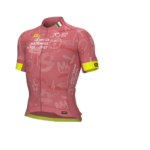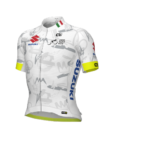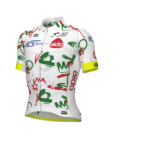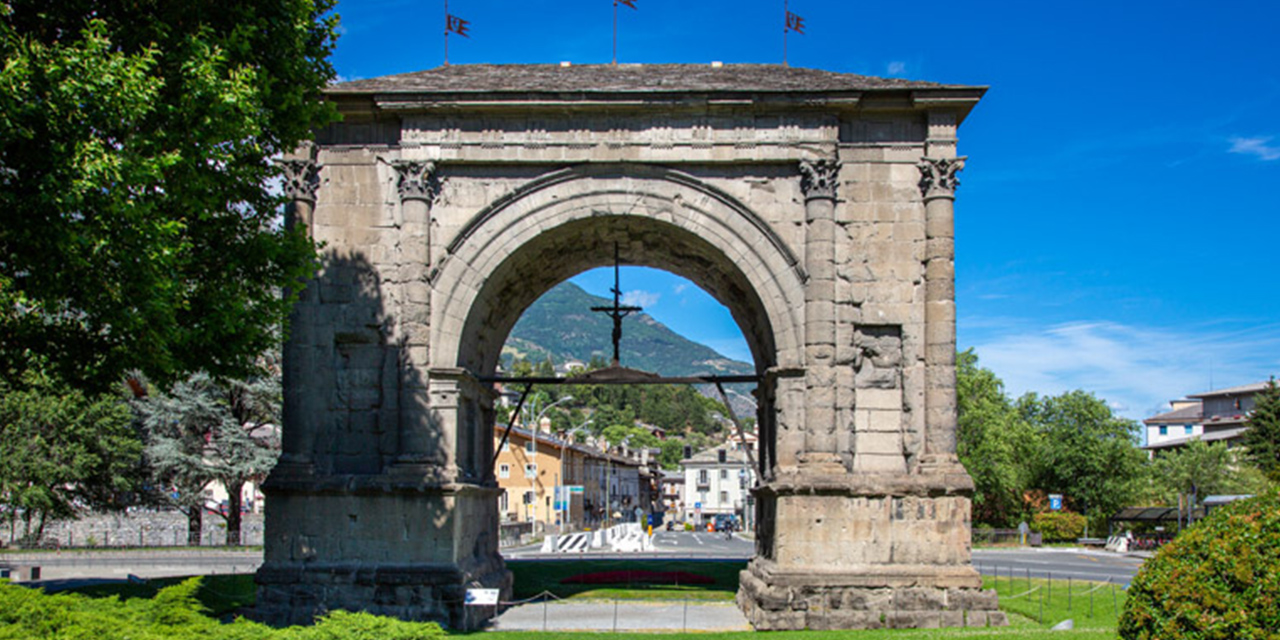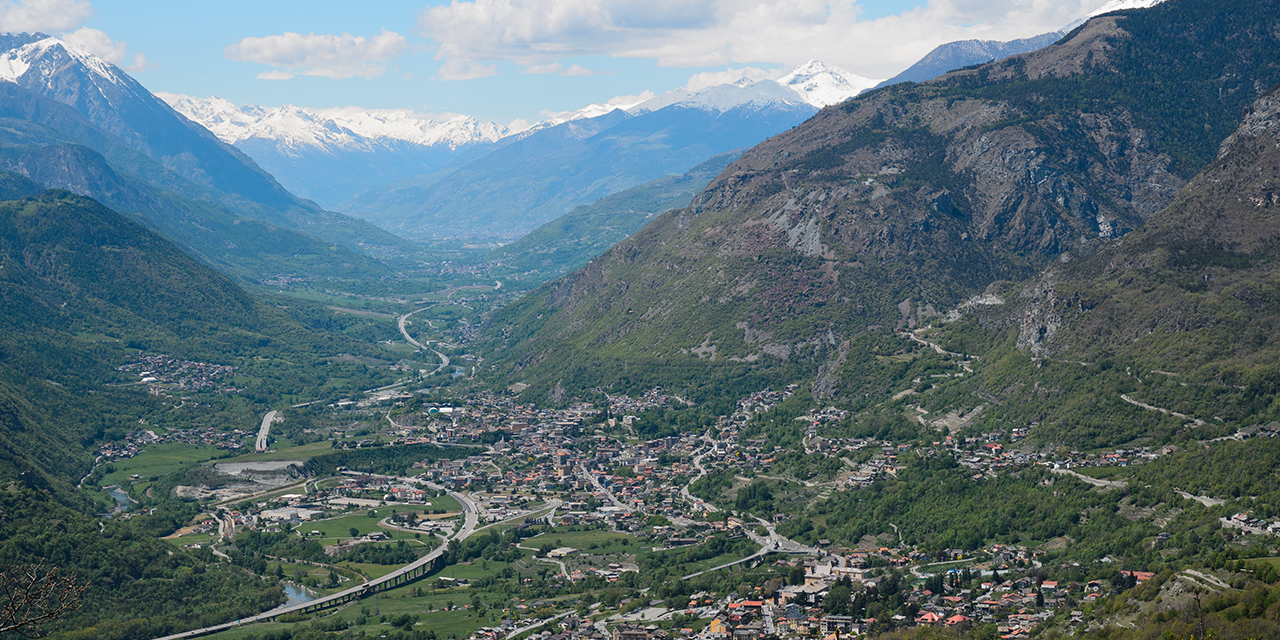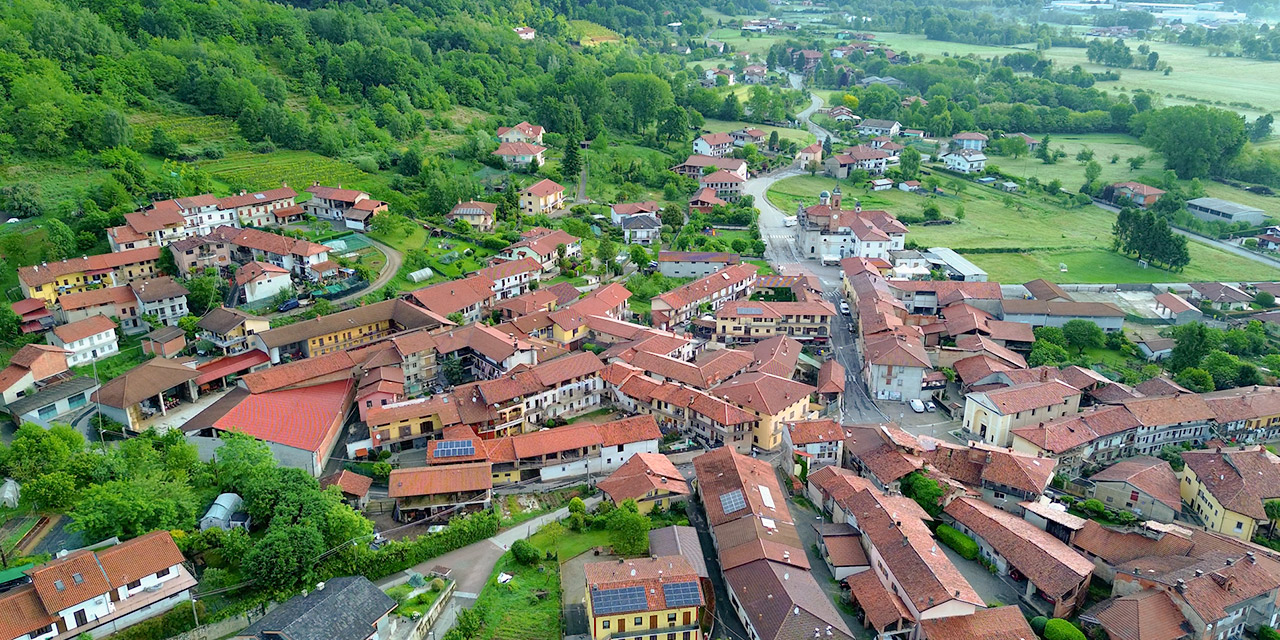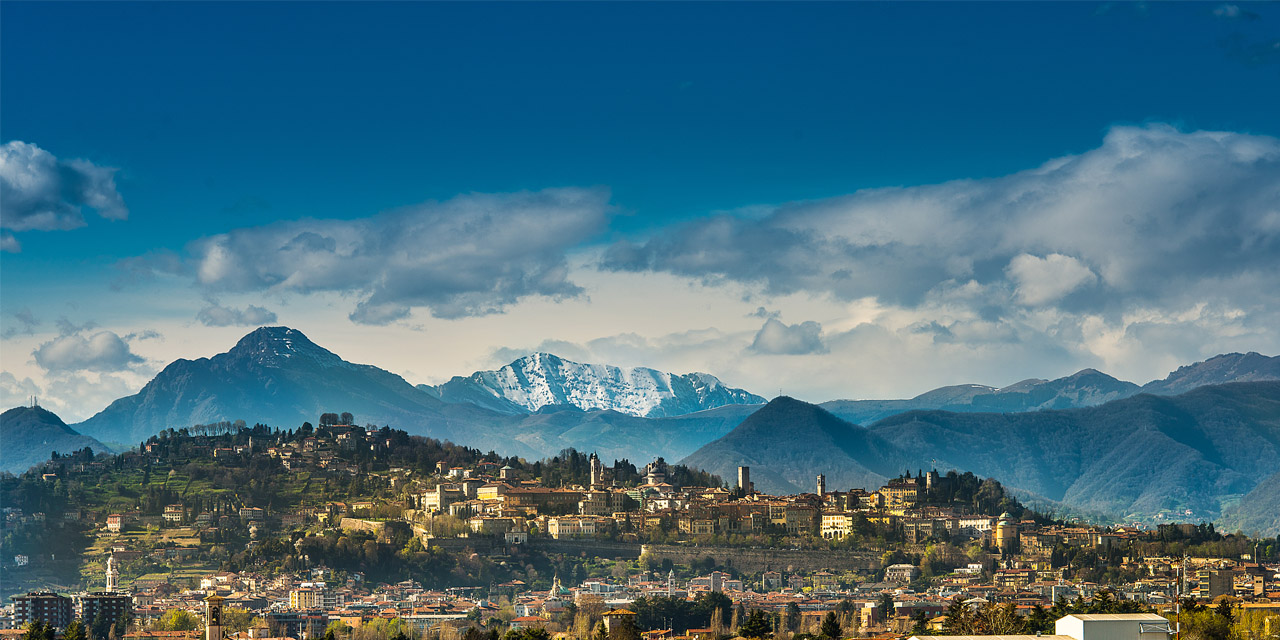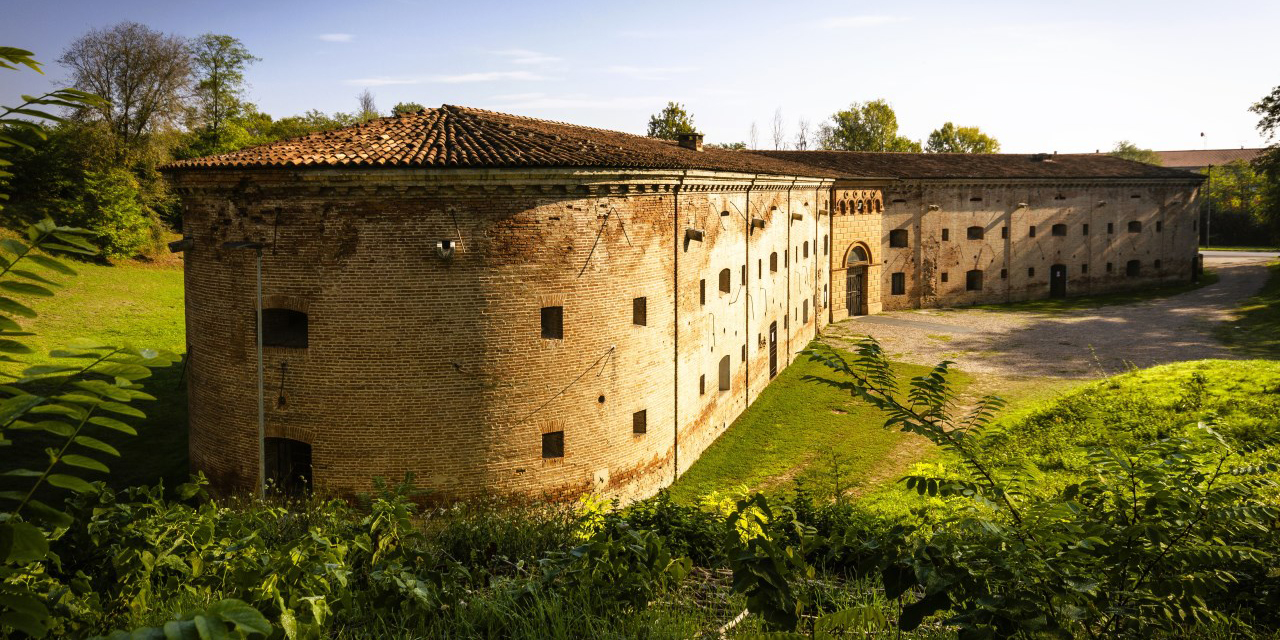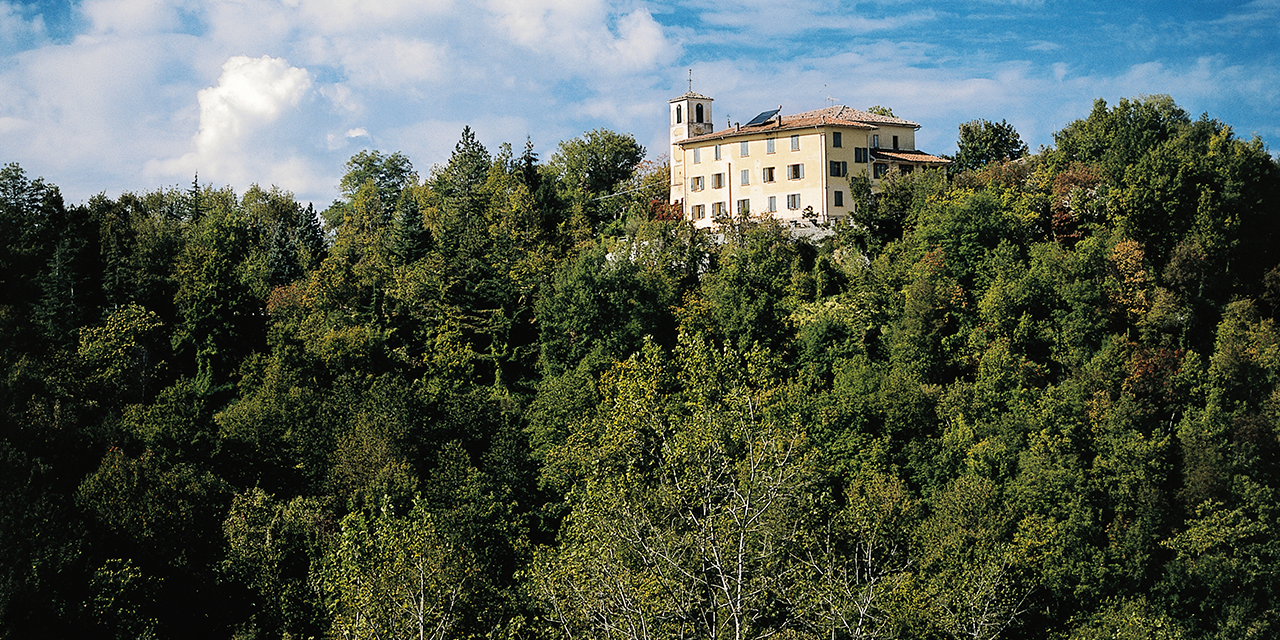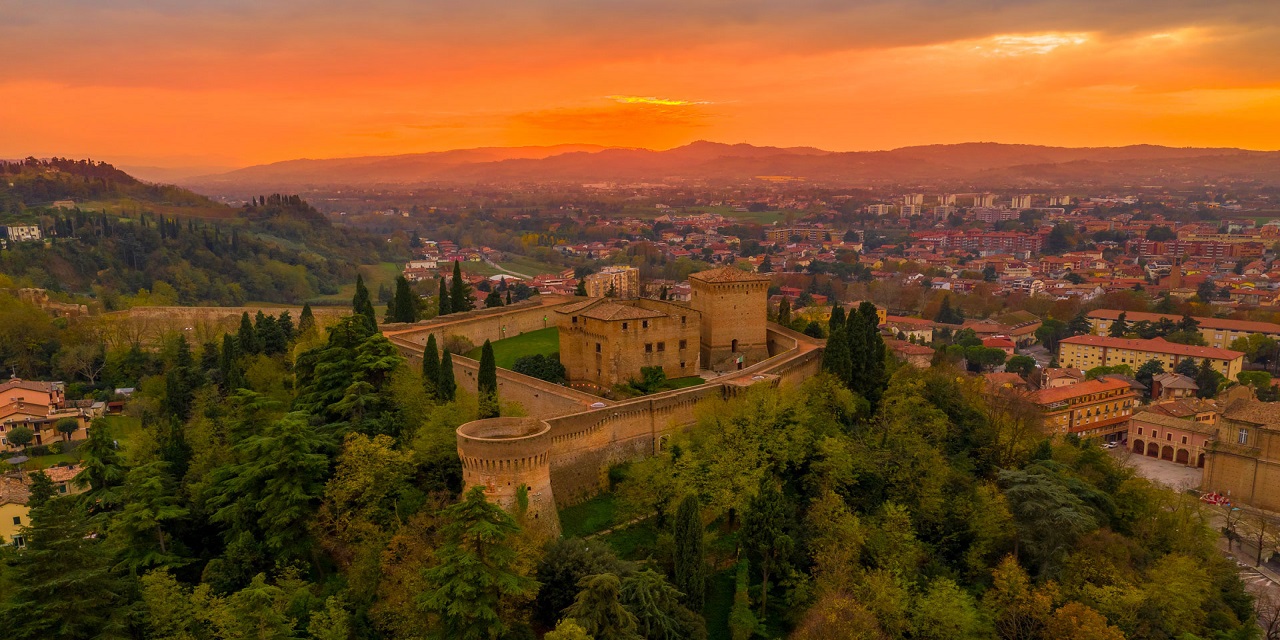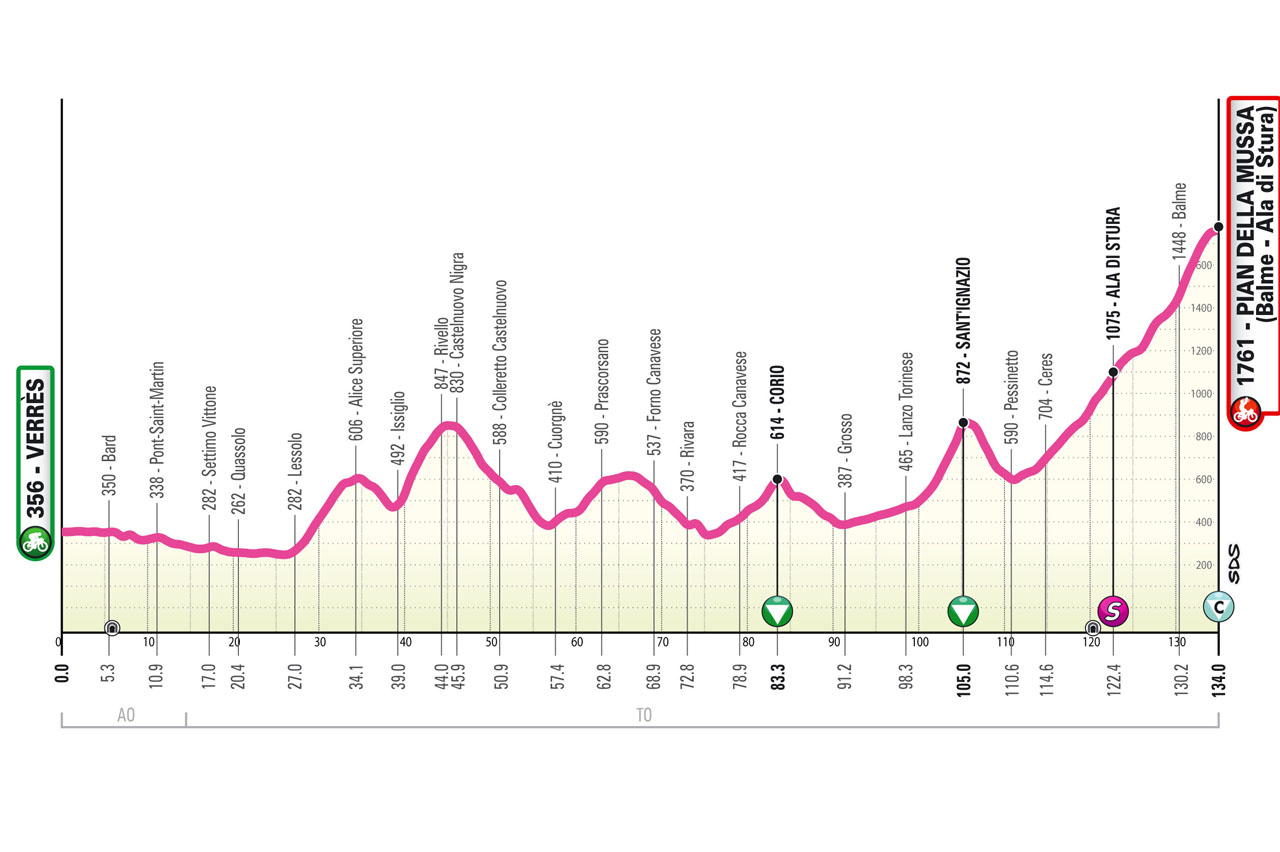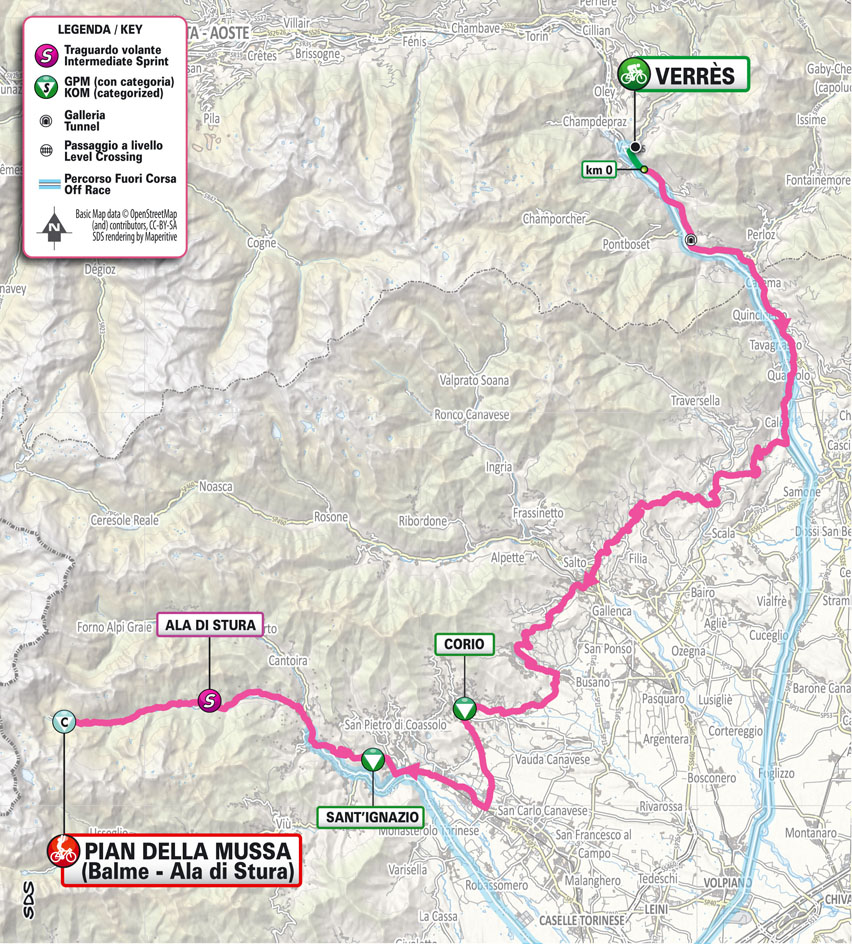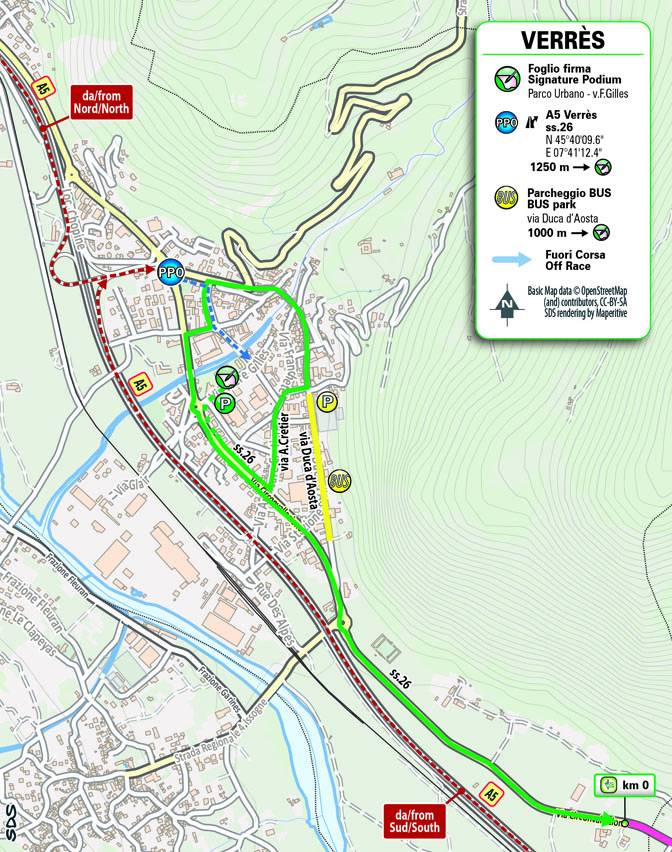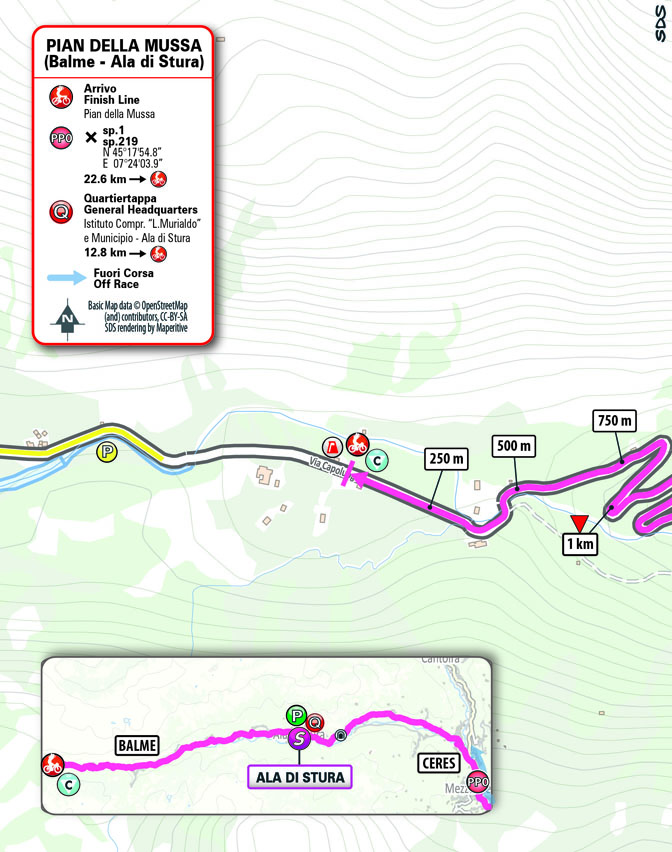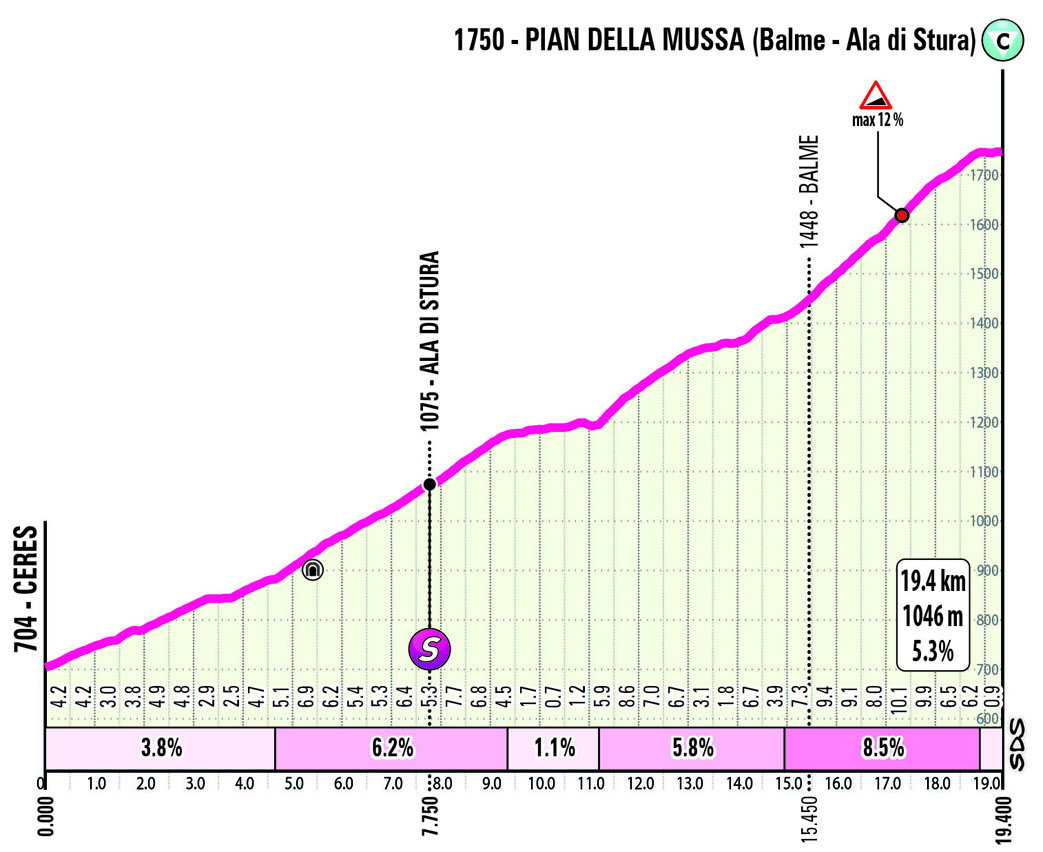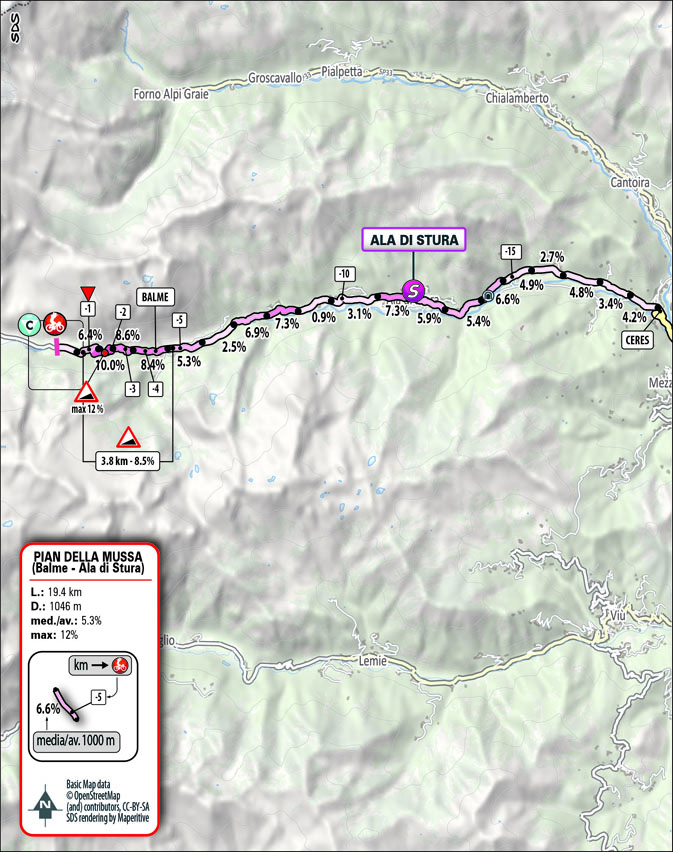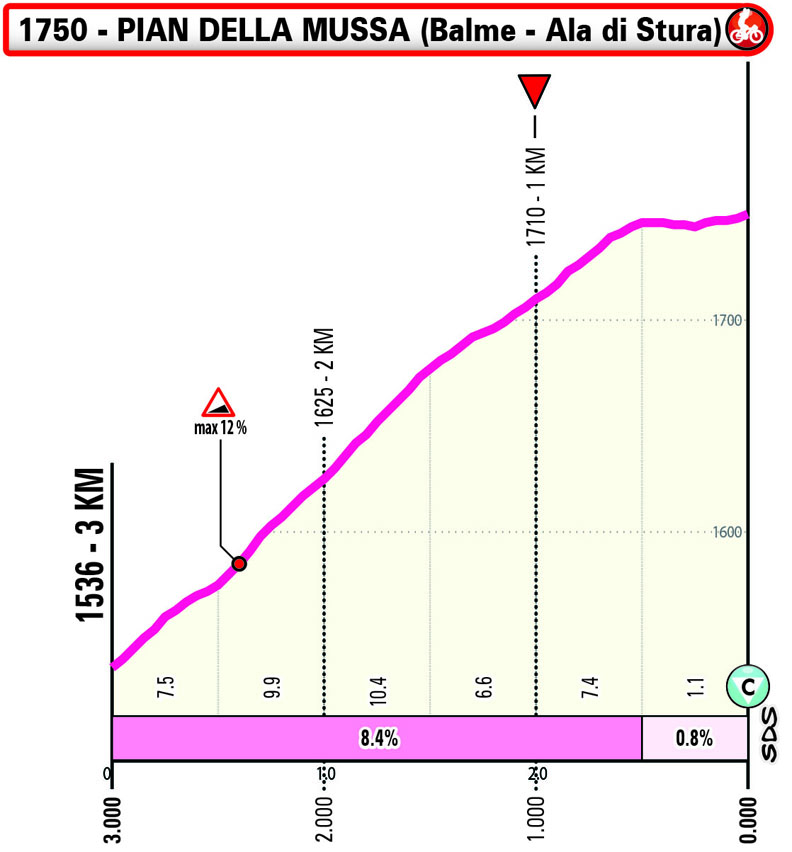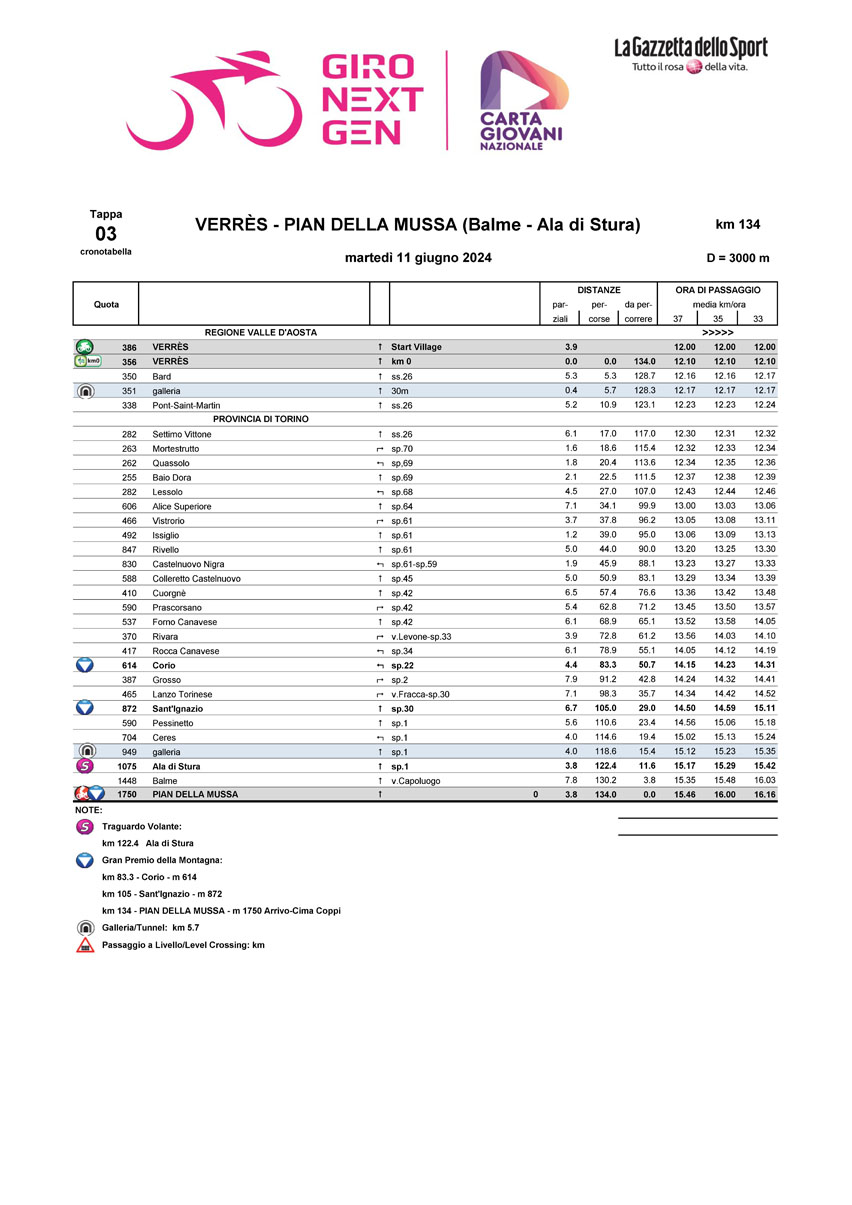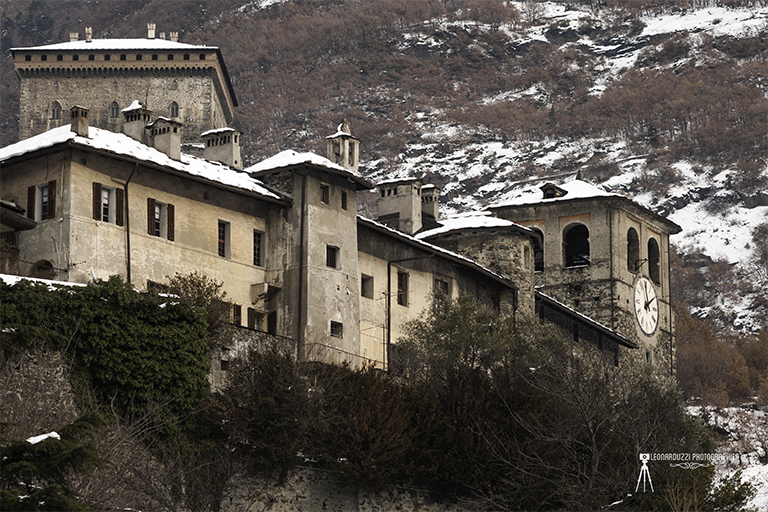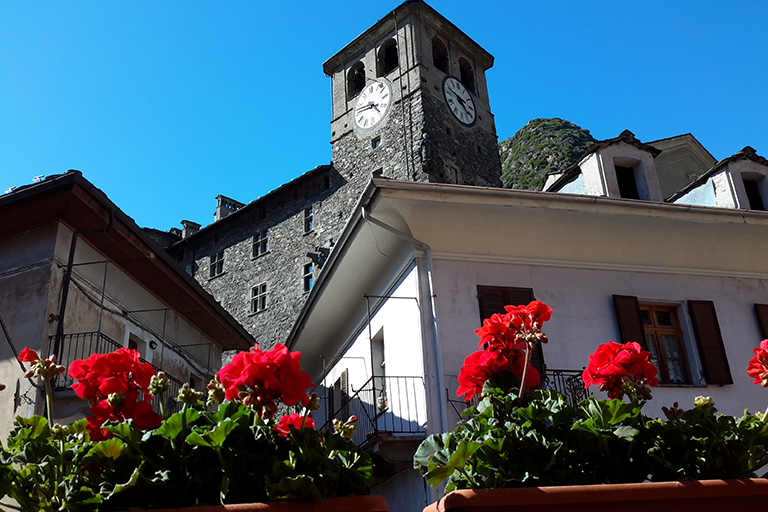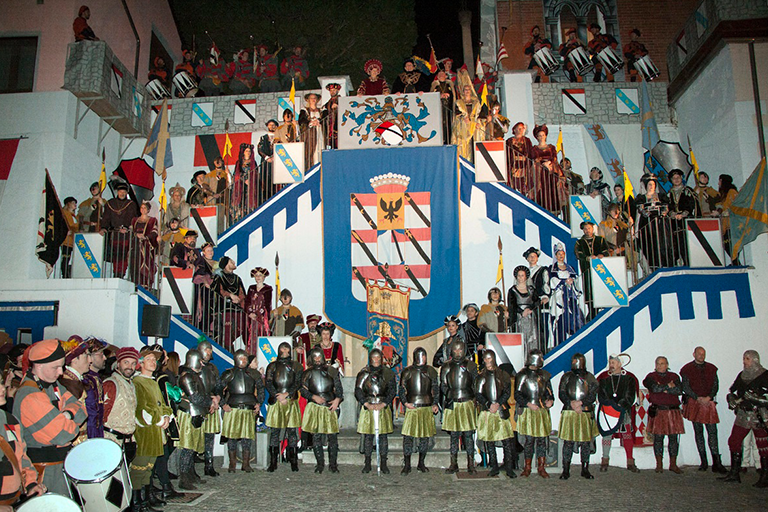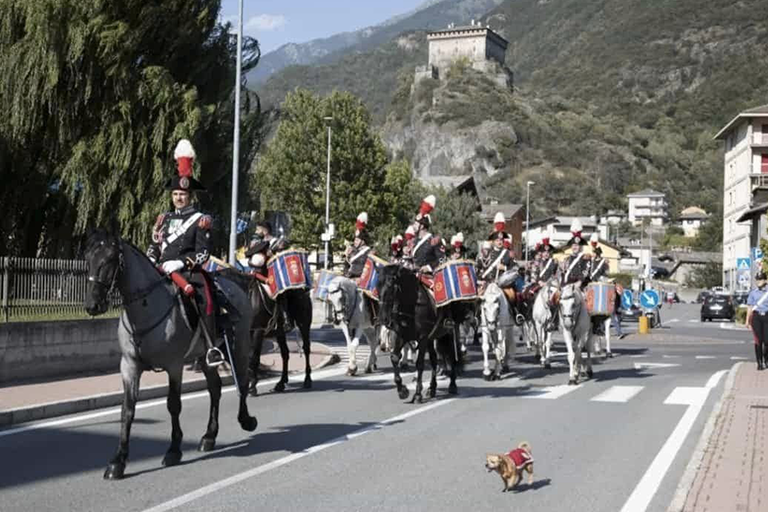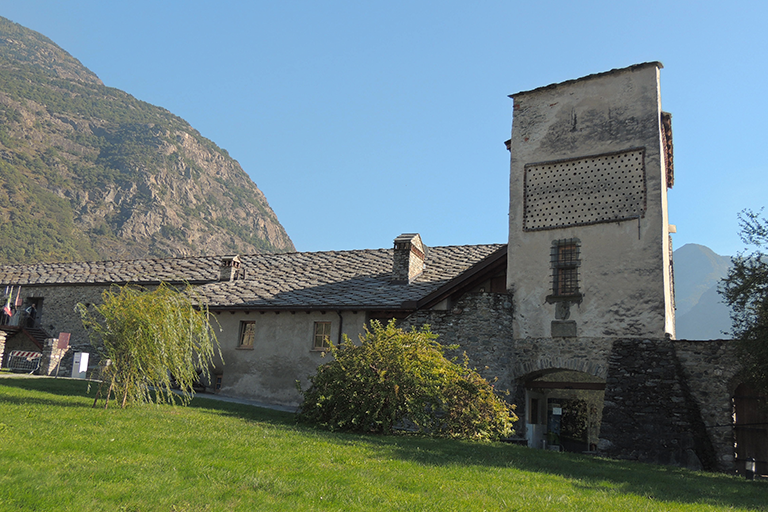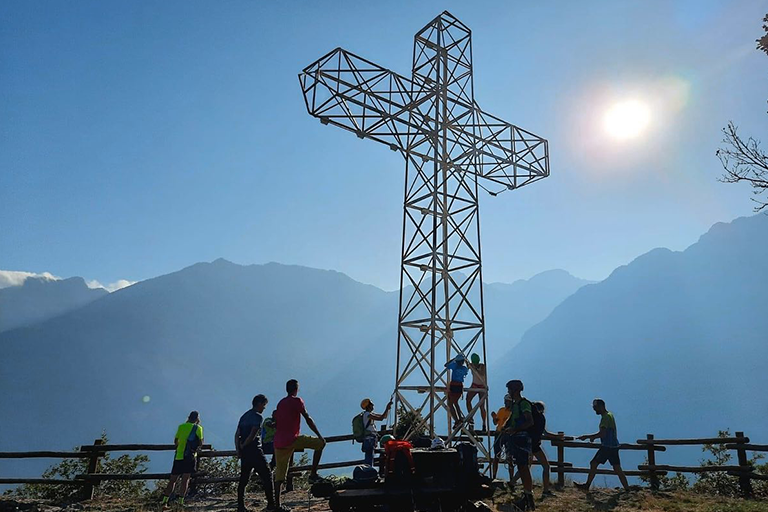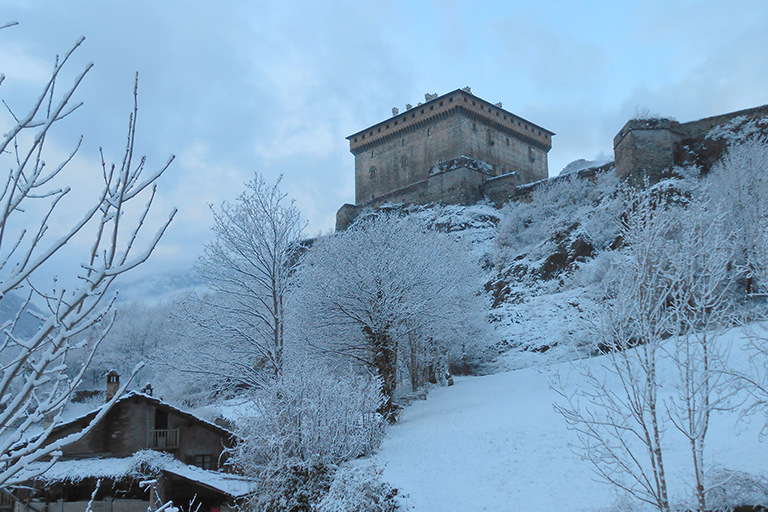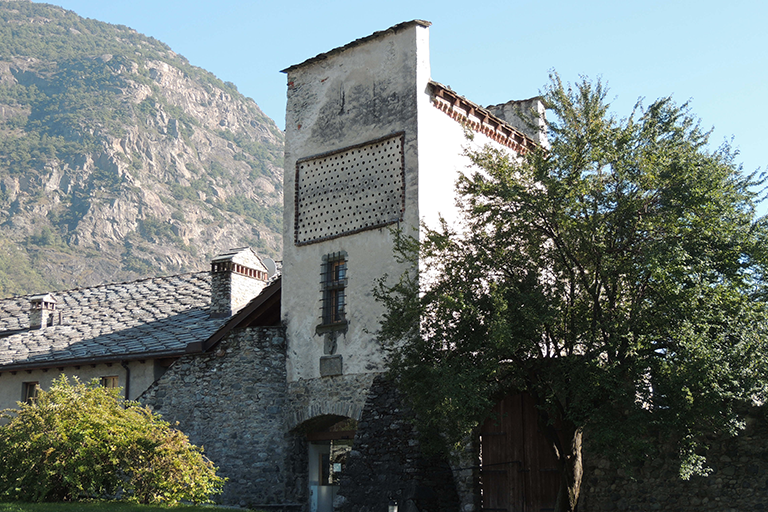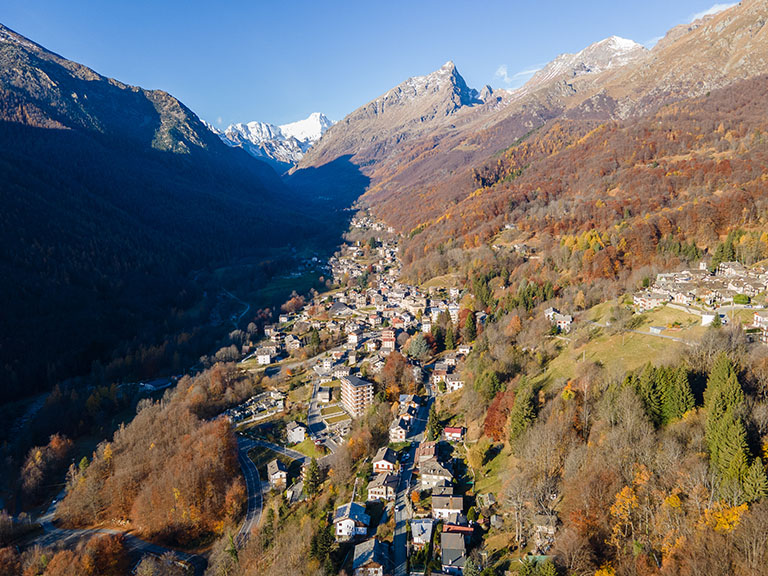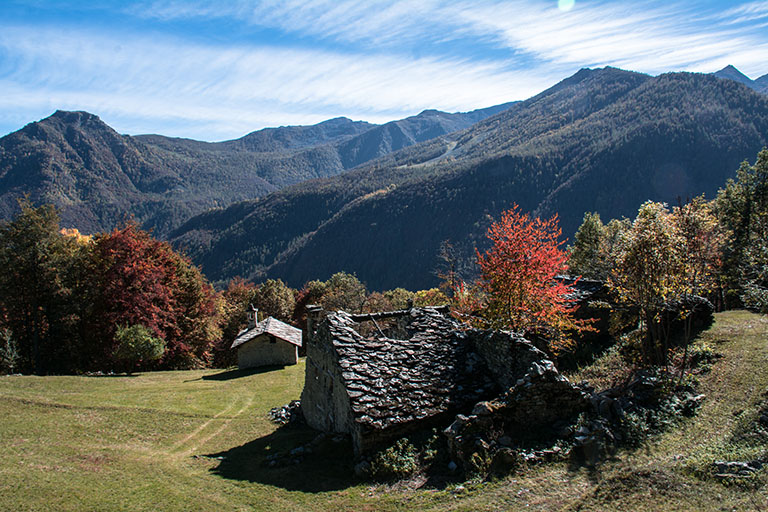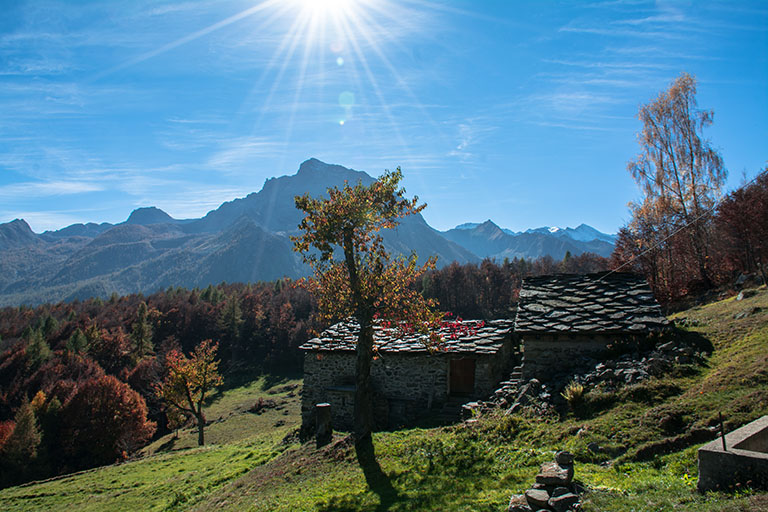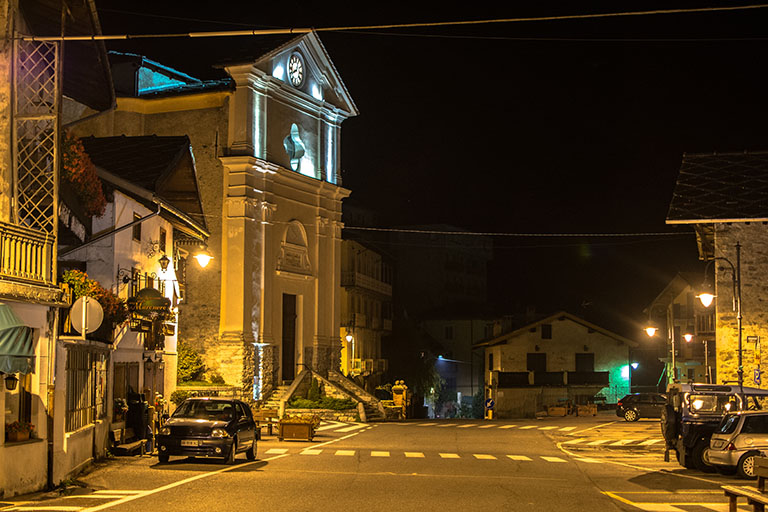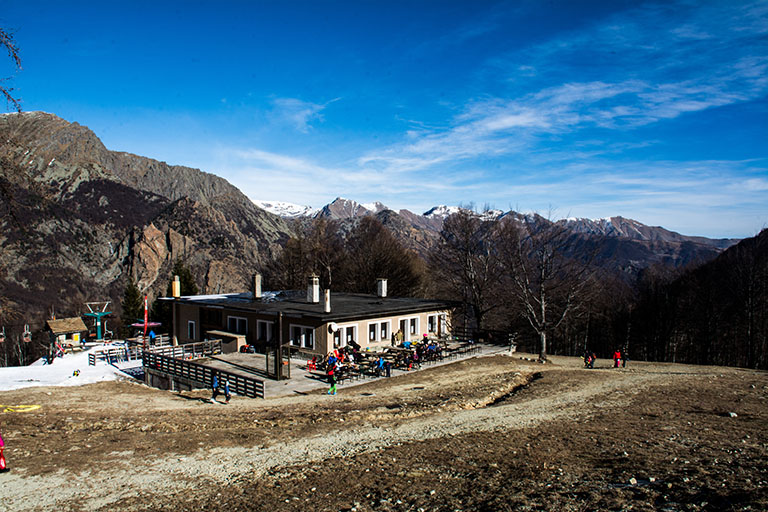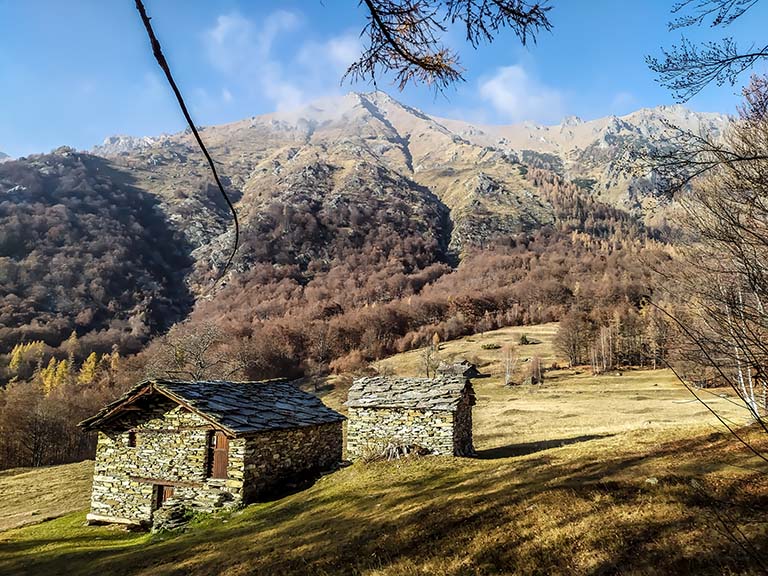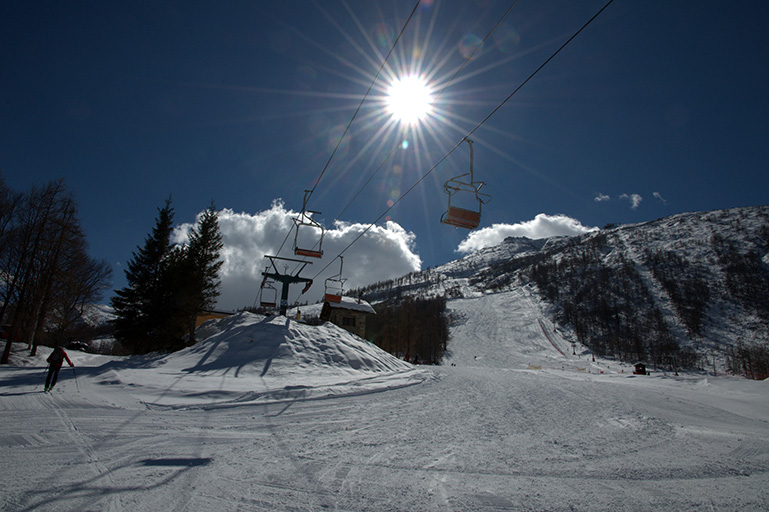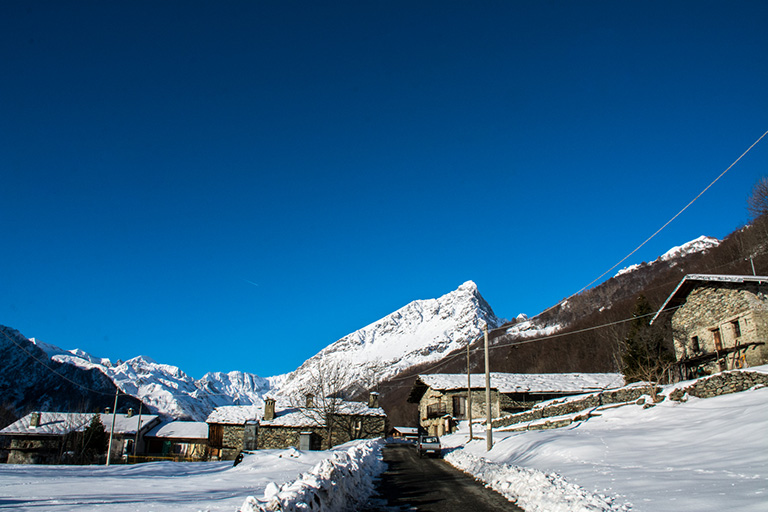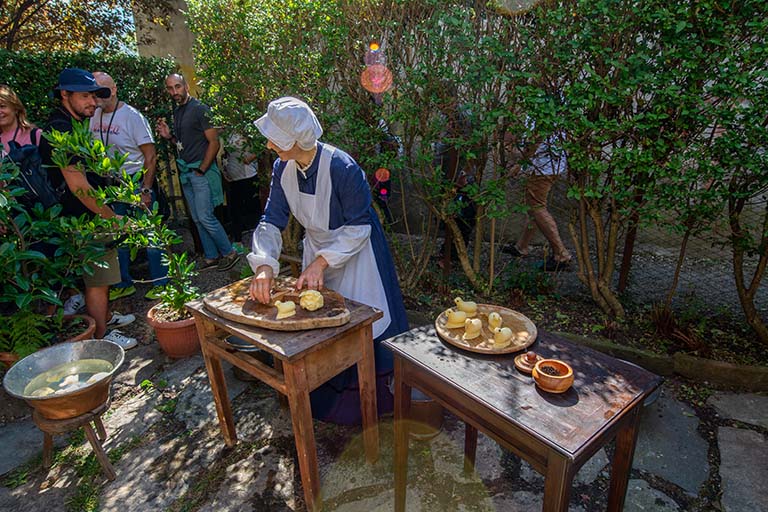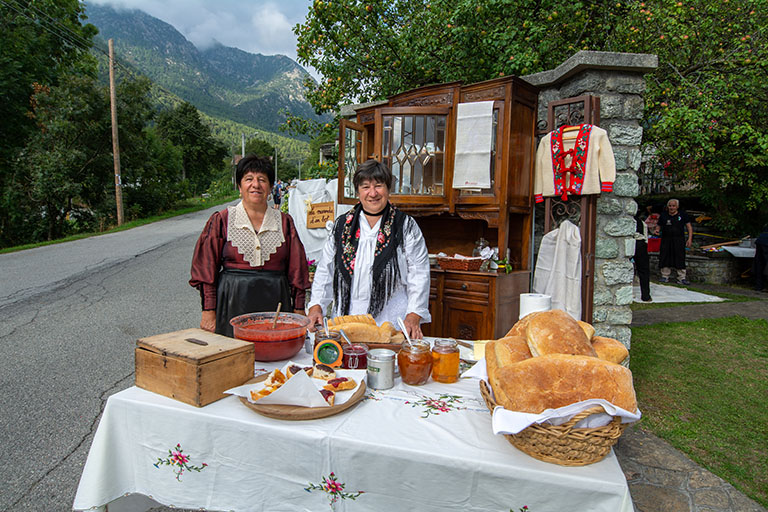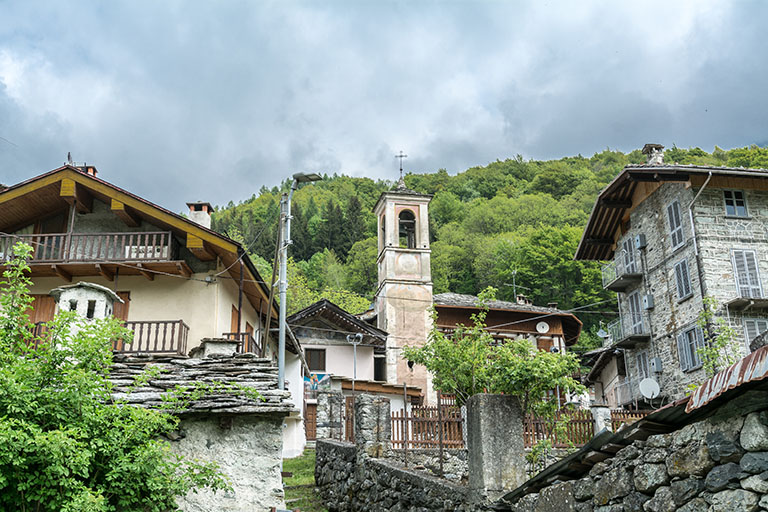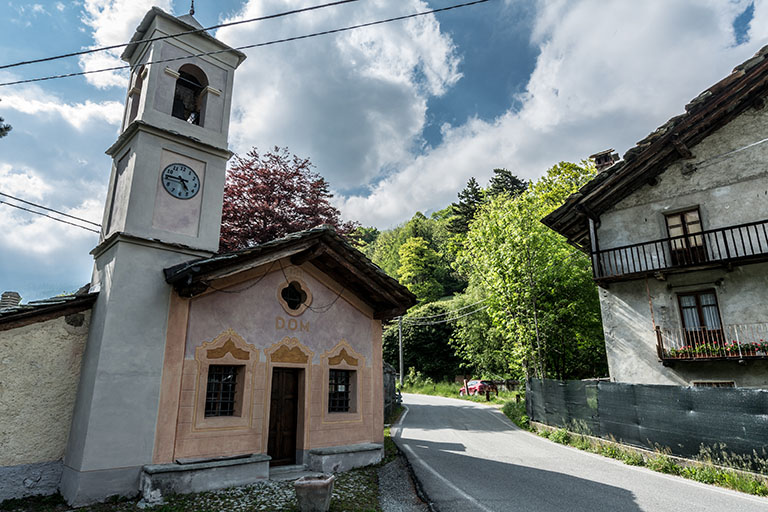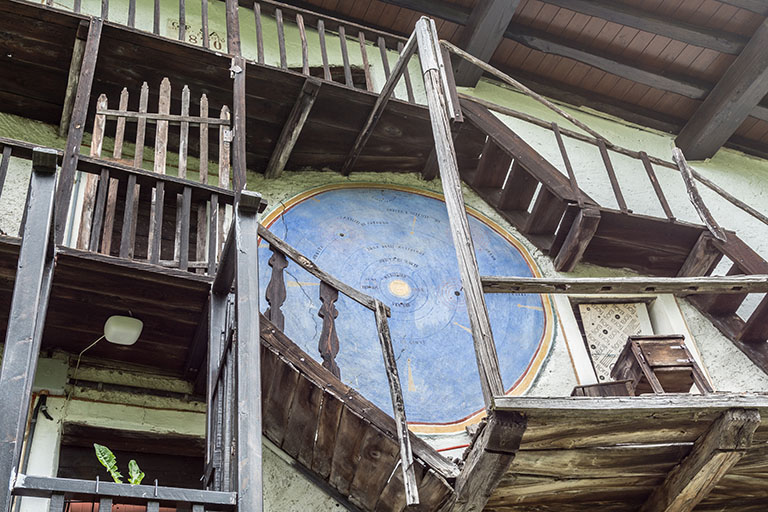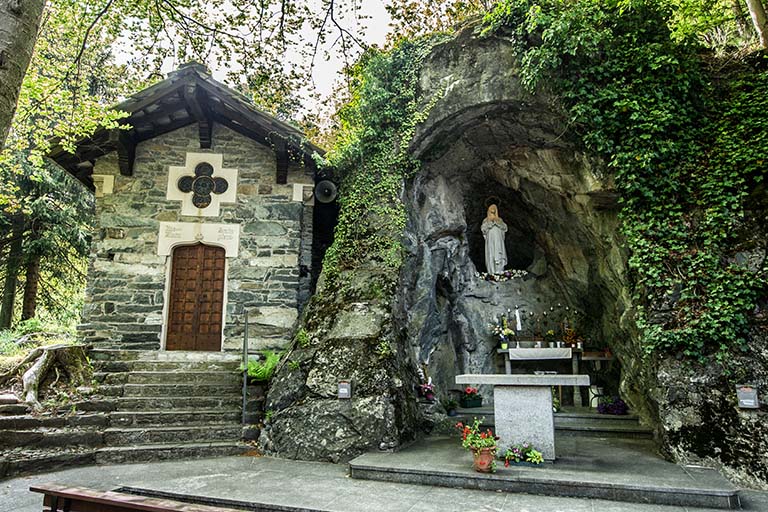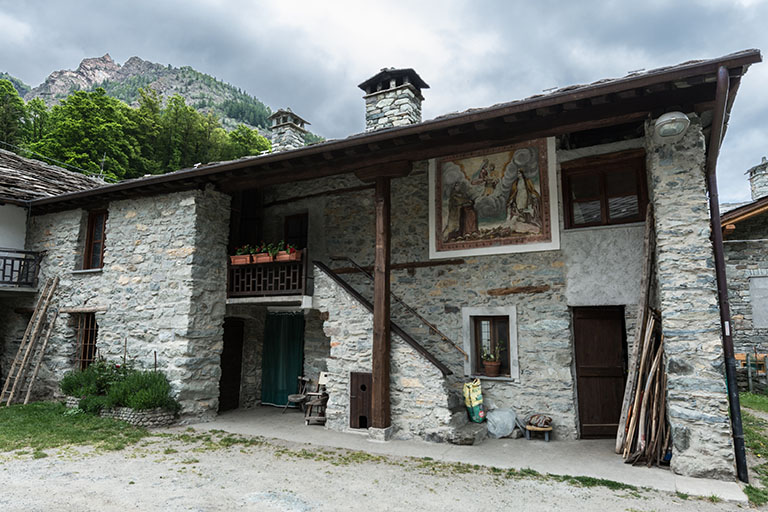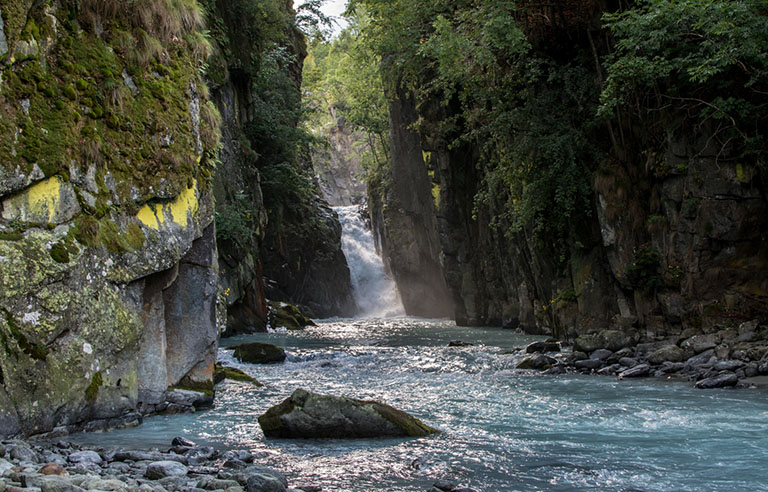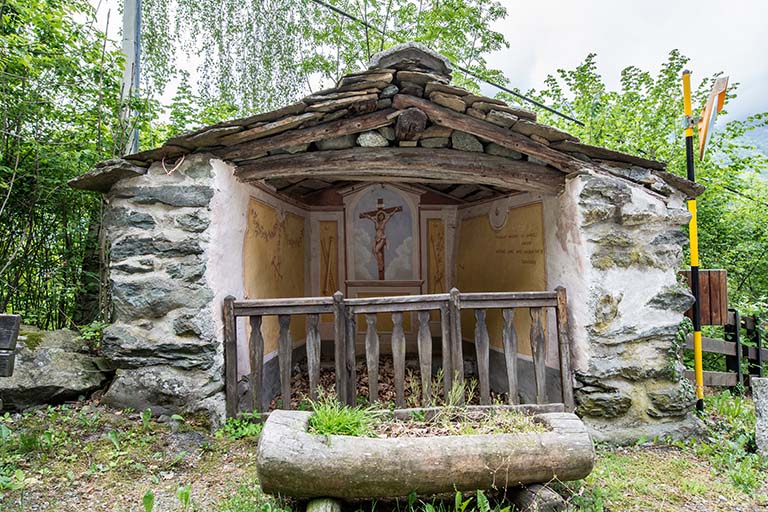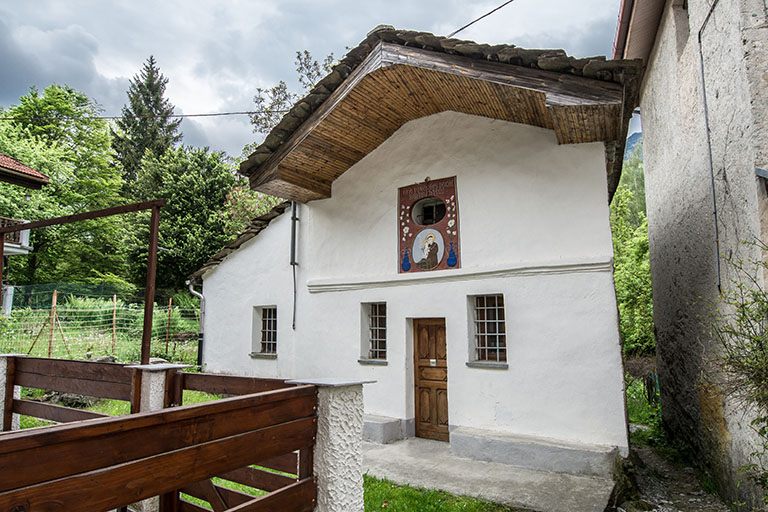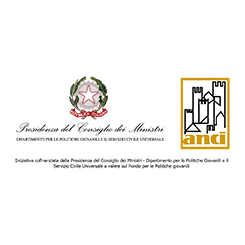learn more
technical info
profile
map
technical info
A mountain stage with a flat first part until entering the Canavese area, which features a series of relatively short but steep climbs leading to the Lanzo Valleys. The riders then climb in sequence Corio, Sant’Ignazio (final over 10%) and the almost 20 km climb of Pian della Mussa.
Last kilometres
Very long final climb with gentle gradients until the last kilometres, where the peloton will face a 3 km stretch at around 9%. False-flat finale
start / finish
climb detail
final kilometres
itinerary timetable
tourist info
Host city:
Verrès
Overview
The village of Verrès is located in the central valley, at the entrance to the Ayas Valley, where the imposing Challant manor stands out, a perfect cube standing as a stronghold of the valley still known today under the name of this noble family.
Besides witnessing the history of this locality, the castle also acts as a sumptuous setting for the historic carnival, which every year sees the figures of Pierre d’Introd and Catherine of Challant as protagonists and evokes the dance in the square of the countess with the young men of the village, while the enthusiastic population acclaimed “Vive Introd et Madame de Challant!”.
Punti d'Interesse
La Tour
This building, called Maison la Tour was the seat of the court since medieval times, nowadays it borders the north side of Piazza Renè de Challant. Indeed, at the foot of the tower there was the beginning of the mule track that, going up to Val d’Ayas (previously called Challand Valley), across the Cime Bianche, it led to the Teodulo pass and from there to Switzerland and northern Europe. Merchants with goods from the East too, they made their way along the “Kramerthal” throughout the long decades. The mild climate allowed to cross the Alps even in winter, making the fortune of the noble Challant family that ruled the Aosta Valley in feudal times.
The building’s façade also features a painting of the Holy Shroud, created when the relic was transferred from Chambéry to Turin in 1578.
The Collegiate Church of Saint-Gilles
The foundation of this religious complex dates to 911, a collegiate church with a scriptorium, a cloister, a seminary for the training of novices and a very rich library that still preserves parchments, papal bulls, precious manuscript volumes and sixteenth-century books. For century the Regular Canons of Saint-Gilles Order, led by the provost, they exercised religious and political-economic control over a wide area stretching from Vercelli to Moûtiers, in the French Tarantasia. Remodelled over time, the building complex preserves the chapel with the sepulchral crypt of Ibleto di Challant, the builder of the Castle of Verrès. An expression of local Gothic architecture, the chapel was incorporated in 1776 into the Baroque church built in place of the earlier Romanesque one.
Napoleon stayed there on May 25th, 1800, during the “second Italian campaign.”
The Castle
A perfect cube made of 30 meters each side; the castle was conceived in 1360 as an impregnable fortress. Its creator, Ibleto di Challant, built it as his solid abode by equipping it with innovative solutions that he picked up in his countless travels to distant lands. The striking staircase of self-supporting arches in the inner courtyard was described by Giacosa as “arches that stand out with the swiftness of a young 18-year-old Hercules,” while the 11 stone mullioned windows with two lights soften the thick stone walls.
Originally built without the town wall, added in 1536 to adapt it to the most modern military techniques by Renato, the fifth Count of the Challant family, the castle dominates the town and guards the valley to the north and the plain to the south, communicating visually with those of Ville-Challand and Issogne.
From the mid-1500s to 1661 the Savoys requisitioned it, installing a military garrison there. In 1894 the State got the property and restored it.
La Murasse
La Murasse is an old farmstead originally owned by the Collegiata di Saint-Gilles. Carlo di Challant who was the commendatory provost and Conte Filiberto’s brother, was the founder. He erected it in 1512 at his own expense and he offered it to the priory.
A crenelated wall encloses the complex of rustic buildings and the dovecote tower. On this, a plaque with the noble coat of arms recalls the generosity of the patron and the fact that the site was built in just three months.
The construction work on the farmstead was simultaneous with the imposing enlargement of the rectory, asked again by the clergyman in order to create accommodation commensurate with his rank.
In the late 1990s, a public acquisition and a conservative restoration of the Murasse complex enabled its conversion to the district library and administrative offices, as well as the construction of exhibitions and conferences halls.
The votive cross
It was placed on Mont-Saint-Gilles in the early postwar period. It represented a vow of the population in May 1st, 1944, when parish priest Don Carlo Boschi mediated with the German militia. He obtained the houses in the village not to be set on fire as a result of partisan actions. Consisting of metal lattice elements, it was made by local craftsmen and assembled on site. Later on the parts were carried on the shoulders of volunteers, along the path that climbs to the top.
From the cross there is a spectacular bird’s eye view, a unique 360-degree panorama of the town and surrounding area.
Enlighted for several years with a photovoltaic system, the cross in the darkness of the night appears from afar as if suspended in the sky.
Every year, on the first Sunday in June, on the altar at the foot of the monument a Mass is celebrated.
Pian della Mussa (Balme-Ala di Stura)
Overview
Ala di Stura, a suggestive center of the Val d’Ala, is surrounded by green meadows and rich woods with characteristic panoramic points, such as the one after the short gallery carved into the rock, from which you can admire the summits of the Bessanese, the Uja di Mondrone and the Monte Rosso.
Although the origins were obscure, Ala’s name already existed “a millennium perhaps before Christ”, to designate not the current country (which had yet to arise) but the mountain hills scattered throughout the Valley on the slopes and grassy peaks of the mountains.
That is, it seems that by ‘Ala’ we meant the whole territory that goes from the Ponte delle Scale to the Piano della Mussa, while the current center was called Prussello (now Prusello).
Most historians are inclined to believe that the first inhabitants of the Lanzo Valleys were the Celts: the origin of some words such as ‘all’ which means ‘Other’ would testify to this.
As for the village of Ala, of which among other things the exact origin is not known, however it is believed that it already existed in the year 1000 with its characteristic main hamlets, which we still find today; the first written quotation dates back to 1267 when the Marquis of Monferrato granted the mines of the Valley to a certain Barizelo di Gerola. Note how the particular orographic writing of the municipal territory, characterized by strong heights, has greatly affected the identification of the sites most suitable for the formation of the rural settlements of the capital and the numerous villages (Pertusetto, Prusello, Villar, Cresto, Mollar, Martassina, Tomà, La Corce, Canova, i Ciardio, Pian del Tetto, Maronera, Chiesaletto, Bans) that wind along the left bank of the Stura since the right is extremely inclined.
After the Romans the valleys suffered the domination of the Lombards, then of Gotranno King of Burgundy, and again Carlo Magno who aggregated them to the county of Turin.
Around 1520-1550 Lanzo and his valleys suffered the French domination, then the Estense and finally the Napoleonic one.
In 1872, work began on the Ceres-Ala carriageway road (9 km long by 3 meters wide) completed in 1873.
In 1890 the inauguration of the telegraph took place, while in the first decade of the last century (1908), Ala di Stura was already equipped with electric lighting systems, public and private, a resident medical service; a pharmacy and shops of all kinds; a telephone system and a second class post office.
With the opening of the rolling stock, Ala became an important resort for holidays and mountaineering.
The inauguration of the Grand Hotel in 1909 consecrated Ala, which since the second half of the 1800s was the destination of numerous holidaymen, a station of international fame.
Food
The gastronomic tradition offers a wide variety of products. Renowned are the local cheeses, such as the famous touma, produced with bovine milk known as early as 150 A.D., goat tomini (fresh cheeses made from goat’s milk), ricotta and butter. Today the valleys offer excellent lard and tasty cured meats from salam ad tueurdji (prepared with chosen meat of adult bovine) to goat meat, rose salami (produced with veal); to mocette, cold cuts obtained with different types of aged meats (for example goat, beef or game). In the time of the grandparents these were delicas to be sold and not to be enjoyed in the family.
Our grandmons once were able to prepare hearty dishes with simple ingredients, using as much as the vegetable garden, meadows and farm animals could offer. The typical dish par excellence was polenta, it was eaten very frequently, often toasted on the stove it was also an excellent breakfast. The polenta tancia (polenta, butter and toma) was a real luxury, so much so that it was consumed only during the holidays, even ‘poulénta and friquendò’ (polenta and stew) was a ‘great occasion’ dish. Definitely more daily was polenta, milk or cheese or the soma (polenta abbrustolita and toma).
Sometimes polenta was replaced by tasty and rich risottos, so much so that one of the most famous dishes in the Valleys is precisely ‘risotto touma and salam eud toueurdji’.
In the daily meal, women never lacked soups of all kinds, created using seasonal products: from the papina (milk and flour soup) to the “mnèstra eud coques” (chestnut soup), from the panada (cooked bread soup flavored with butter and sometimes leeks) to soups with spring herbs.
A self-depict must be done for the meat: it was once a very precious good, therefore suitable only for great occasions, serious diseases or, when an animal died by misfortune. At that time, they were mainly made stews, boiled meats, roasts… sometimes on our tables also appeared game such as chamois, groundhog, hare, fox and wild boar, which was often accompanied by the inevinfortable polenta.
At that time there were few desserts, very often they were reduced to seasonal fruit with a little sugar and a few drops of red wine. However, during the holidays the fritcheui pancakes (eggs, flour, milk, yeast) magically appeared in the kitchens; the torcetti then made with the bread dough on which melted butter was brushed; the pastas ad mega (dry pastas made from corn flour); and finally the whipped cream.
Points of Interest
Meridians and frescoes
The municipal territory of Ala di Stura, located on one of the routes of connection between France (Chambery) and Italy (Turin) through the crossings of the Autaret and the Arnas, but, even more important, constituting since ancient times the fundamental axis of commercial exchanges, over time has been able to keep alive the constructive tradition of solar clocks. This has allowed the small municipality to open up and relate to the surrounding world and therefore to grow and evolve constantly. The list and description of numerous solar dials identified in the municipality of Ala, deserve special attention. Several sundials built in the second half of the nineteenth century have their own particular ancient charm, along with frescoes, some of which date back to the time of Perini (Painter active in the Valli di Lanzo in the period from 1575 to 1588).
For the tourist who wants to visit and discover the sundials, he can keep as a reference the numerous bulletin posts with all the information located on the territory (starting from the square), or the website www.progettomeridiane.comunealadistura.it.
Church
The parish church, dedicated to Saints Nicolao and Grato, was built in the XI-XII centuries and is among the oldest of the valleys. Become insufficient for the population, it was the subject of enlargement between 1727 and 1730. In the eighteenth century the sculptor Tommaso Fontana and his gilder Giovanni Crotti performed works on the tabernacle, on the altar of the chapel of the Madonna del Rosario and on the altar of the Chapel of San Giuseppe. The latter altar was made of wood and in the 1960s it was replaced with a marble one. Interesting is the bell tower attached to the church, in Lombard Gothic style; it reproduces, in small size, that of Ceres (twelfth century).
Paths
There are numerous paths that, in the Lanzo Valleys, cross the territory, leading tourists and enthusiasts to experience intense moments in the open air and to admire breathtaking landscapes along more or less challenging paths. Walking through the woods, you can experience great emotions in contact with a still intact nature. There are many opportunities that offer the hiker.
Videos Stage 03

Giro Next Gen 2023 | Stage 3 | Highlights
13 Jun 2023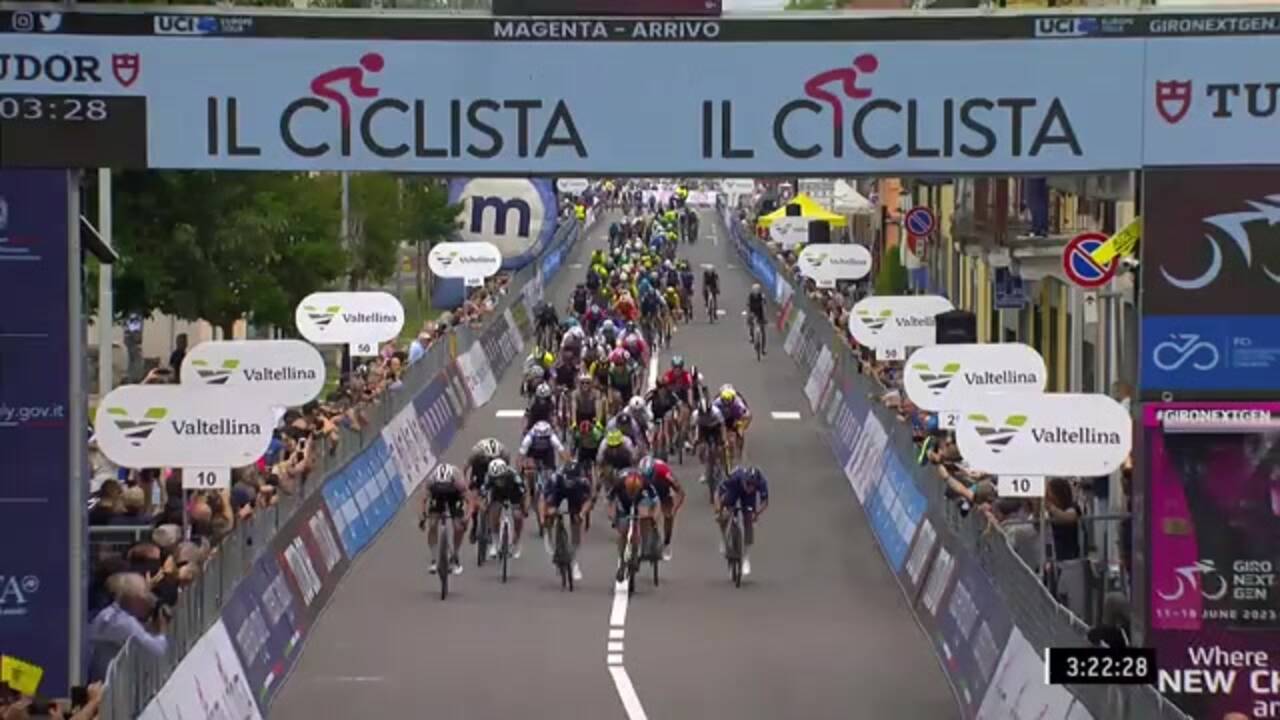
Giro Next Gen 2023 | Stage 3 | Last KM
13 Jun 2023

